Team-BHP
(
https://www.team-bhp.com/forum/)
From the email which i received :-
Radial Engines
Radial engines are used in aircraft having propeller connected to the shaft delivering power in order to produce thrust its basic mechanism is as follows
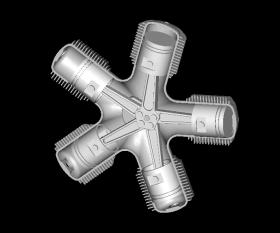 Steam engine Principle
Steam engine Principle
Steam engine once used in locomotives was based on the reciprocating principle as shown below
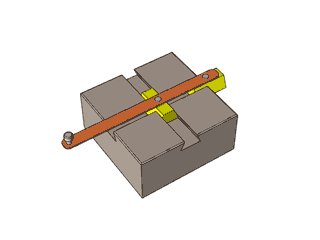 Sewing Machine
Sewing Machine 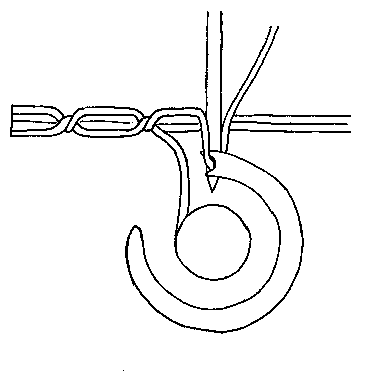 Maltese Cross Mechanism
Maltese Cross Mechanism
This type of mechanism is used in clocks to power the second hand movement.
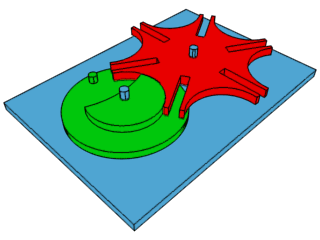 Manual Transmission Mechanism
Manual Transmission Mechanism
The mechanism also called as “stick shift” is used in cars to change gears manually
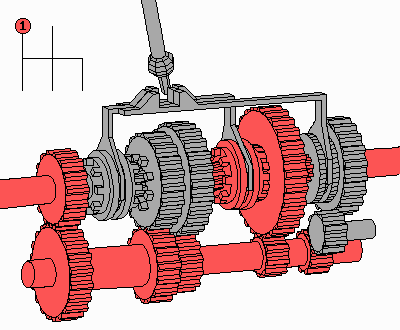 Constant Velocity Joint
Constant Velocity Joint
This mechanism is used in the front wheel drive cars
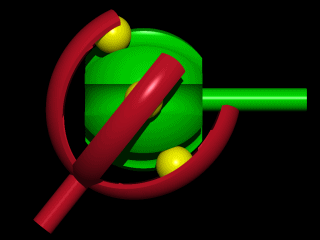 Torpedo-Boat destroyer System
Torpedo-Boat destroyer System
This system is used to destroy fleet in naval military operations.
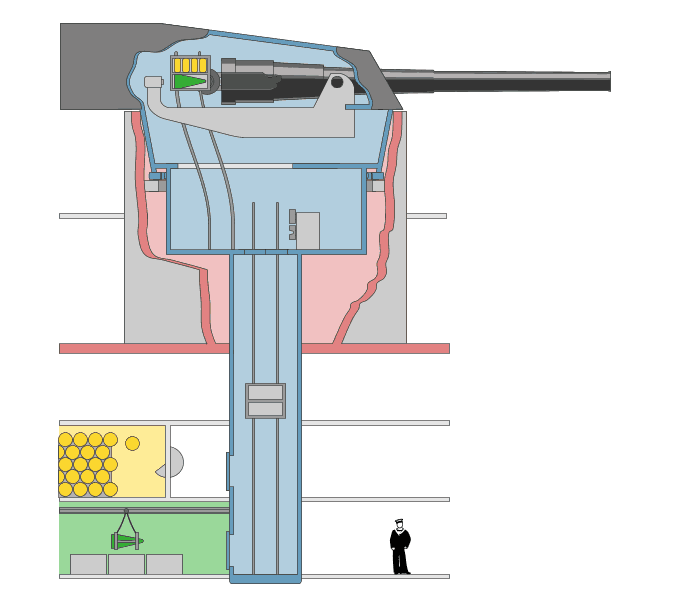 Rotary Engine
Rotary Engine
Also called as Wankel engine is a type of internal combustion engine has a unique design that converts pressure into rotating motion instead of reciprocating pistons
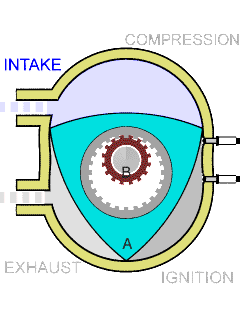
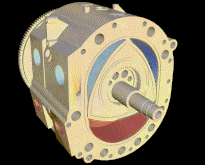
Awesome man, especially the sewing machine thing.
OT - what would be the advantage of having a radial engine in aircrafts? Is it something to do with keeping the center of mass fixed?
Quote:
Originally Posted by vina
(Post 2364240)
Awesome man, especially the sewing machine thing.
OT - what would be the advantage of having a radial engine in aircrafts? Is it something to do with keeping the center of mass fixed?
|
Biggest advantage is shown in the animation itself, the single crankshaft is getting power from many pistons & that too in a very limited space as compared to In Line Engines. Radial Engines owing to less weight also offer a good power to weight ratio compared to In Line Engines.
Quote:
Originally Posted by saurabhdadhichi
(Post 2364285)
Biggest advantage is shown in the animation itself, the single crankshaft is getting power from many pistons & that too in a very limited space as compared to In Line Engines. Radial Engines owing to less weight also offer a good power to weight ratio compared to In Line Engines.
|
Well, it is not clear to me why would this take less space than inline engine. I mean the cylinder walls have to be made to the same specs as an inline engine, and this one can not even share the same camshaft should it try overhead cams (though in push-rod based design, there should not be much of a difference).
similarly why it should have less weight (than inline) is not clear to me.
can you elaborate on what are the major advantages?
By the way, we may be going off topic here - moderators please send a PM and I'll stop immediately.
Quote:
Originally Posted by vina
(Post 2364240)
OT - what would be the advantage of having a radial engine in aircrafts? Is it something to do with keeping the center of mass fixed?
|
You can get rid of long crank shafts present in V and inline engines which inturn might save some weight. Also all cylinders are exposed to airflow and usually they are air cooled (weight saving here too)
Quote:
Originally Posted by mod-the-pc
(Post 2364298)
You can get rid of long crank shafts present in V and inline engines which inturn might save some weight.
|
wouldn't you lose some of this saving in the flywheel weight? Also how much of a saving is this one to begin with?
Though I can see you definitely will save some weight this way. Another question - where will the camshaft be located? it rotates at half the speed of the crank (unless of course the engine is a two stroke) in an inline engine, even if the camshaft is off center it is symmetric for all cylinders.
Quote:
Originally Posted by mod-the-pc
(Post 2364298)
Also all cylinders are exposed to airflow and usually they are air cooled (weight saving here too)
|
:thumbs up
Anyway, I found
this one wikipedia - answers many of the questions. Here's a quote from the article:
"
Modern car engines require very little maintenance apart from oil changes, aircraft engines are now, in comparison and paradoxically, rather heavy, dirty and unreliable."
Although there are few small aircraft that use V configuration engines the radial comes with their definitive advantages in aviation.
1. They concentrate power and torque on a single shaft.
2. The ratio of length of the aircraft to length occupied by the engine is very large for radial engine leaving more space for fuel among other things (sometimes meant longer range for aircraft). Think of typical 18 or 24 cylinders used in typical aircraft, the length of the inline engine would be as long as the aircraft itself. V configuration, although better than inline would also be very long compared to radial engines.
3. In inline or V configuration the cooling is an issue and the last cylinders( the ones farthest from the front) will heat up to different temperature. However, in the radial engine all the cylinders would be cooled to similar (might not be same) temperature. Aids in efficiency
4. Long inline configuration means there is need for long shafts to transmit power and needs to withstand torque at different points on the shaft. So, more and more weight gets added trying to make the shaft stronger.
5. Since there are a lot of cylinders, even a slight mismatch can cause huge vibrations and the aircraft body may not withstand such vibrations and air is the last place you want such vibrations.
I couldn't figure how the stick shift works in manual transmission - not from the animation at least.
How do the pink/red sections get engaged?
Thanks
--Ragul
Quote:
Originally Posted by Ragul
(Post 2364373)
I couldn't figure how the stick shift works in manual transmission - not from the animation at least.
How do the pink/red sections get engaged?
Thanks
--Ragul
|
There are teeth on the sides of the gears, the stick moves around blocks that engage those teeth.
by the way, this is not exactly how synchro-mesh works - that has help in equalising the engine rpm and shaft rpm.
Although there are few small aircraft that use V configuration engines the radial comes with their definitive advantages in aviation.
1. They concentrate power and torque on a single shaft.
2. The ratio of length of the aircraft to length occupied by the engine is very large for radial engine leaving more space for fuel among other things (sometimes meant longer range for aircraft). Think of typical 18 or 24 cylinders used in typical aircraft, the length of the inline engine would be as long as the aircraft itself. V configuration, although better than inline would also be very long compared to radial engines.
3. In inline or V configuration the cooling is an issue and the last cylinders( the ones farthest from the front) will heat up to different temperature. However, in the radial engine all the cylinders would be cooled to similar (might not be same) temperature. Aids in efficiency
4. Long inline configuration means there is need for long shafts to transmit power and needs to withstand torque at different points on the shaft. So, more and more weight gets added trying to make the shaft stronger.
5. Since there are a lot of cylinders, even a slight mismatch can cause huge vibrations and the aircraft body may not withstand such vibrations and air is the last place you want such vibrations.
I wish there were some way of slowing down the animation. Still trying to understand the sewing machine. I'd seen few of the other across different sites on the 'net. Howstuffworks is a pretty neat side explaining mechanisms with animations.
Quote:
Originally Posted by mmxylorider
(Post 2364482)
I wish there were some way of slowing down the animation. Still trying to understand the sewing machine. I'd seen few of the other across different sites on the 'net. Howstuffworks is a pretty neat side explaining mechanisms with animations.
|
For sewing machine:
There are two threads in the picture - one is coming from the needle, the other is spooling out of the bobbin (the round rotating thing)
The horizontal moving thing is the cloth. The entire thread on the top of the cloth comes from the needle, the entire thread on the bottom side comes from the bobbin.
The cut in the bobbin grabs the needle's thread-loop and in each cycle makes a sort of lose knot which then gets tightened by the movement of the needle and and cloth.
Also, the bobbin is not exactly vertical, it is slanted such that its axis is pointing out and upwards from the display. so when the "cut" reaches the top part and grabs the needle-thread-loop, it is behind (from the viewers' perspective) the bobbin-thread, but by the time the cut reaches the bottom, it comes closer to the viewer and the bobbin is behind (thus completing the knot)
Focus on the needle's thread and it'll be easier to get it.
What are the uses of a rotary engine?
Quote:
Originally Posted by aks2010
(Post 2424307)
What are the uses of a rotary engine?
|
Mazda's high end cars - that is the primary use in automobile world. Otherwise not many applications.
By the way, by rotary engine you mean rotary internal combustion engines right? Because all turbine engines are rotary too - and they have almost 100% market share in aviation as well as power generation
| All times are GMT +5.5. The time now is 06:44. | |










